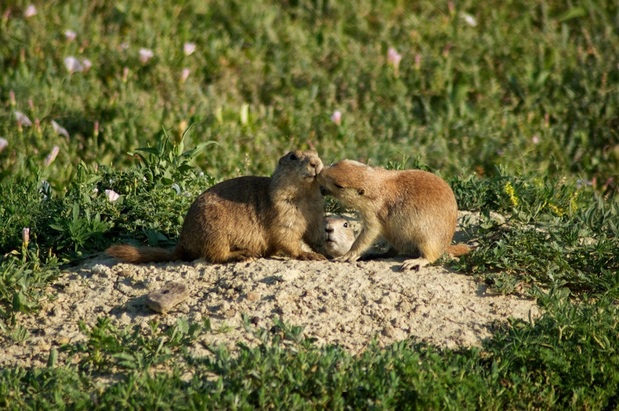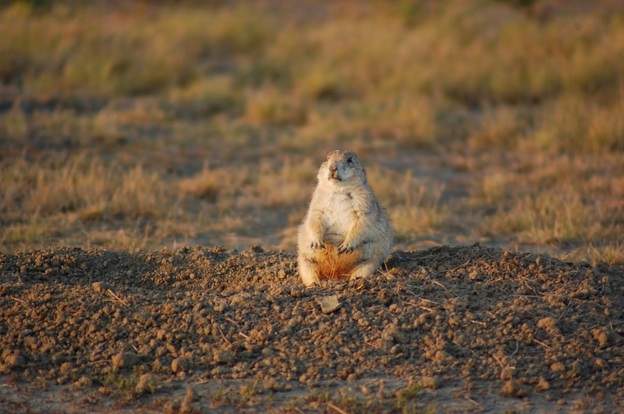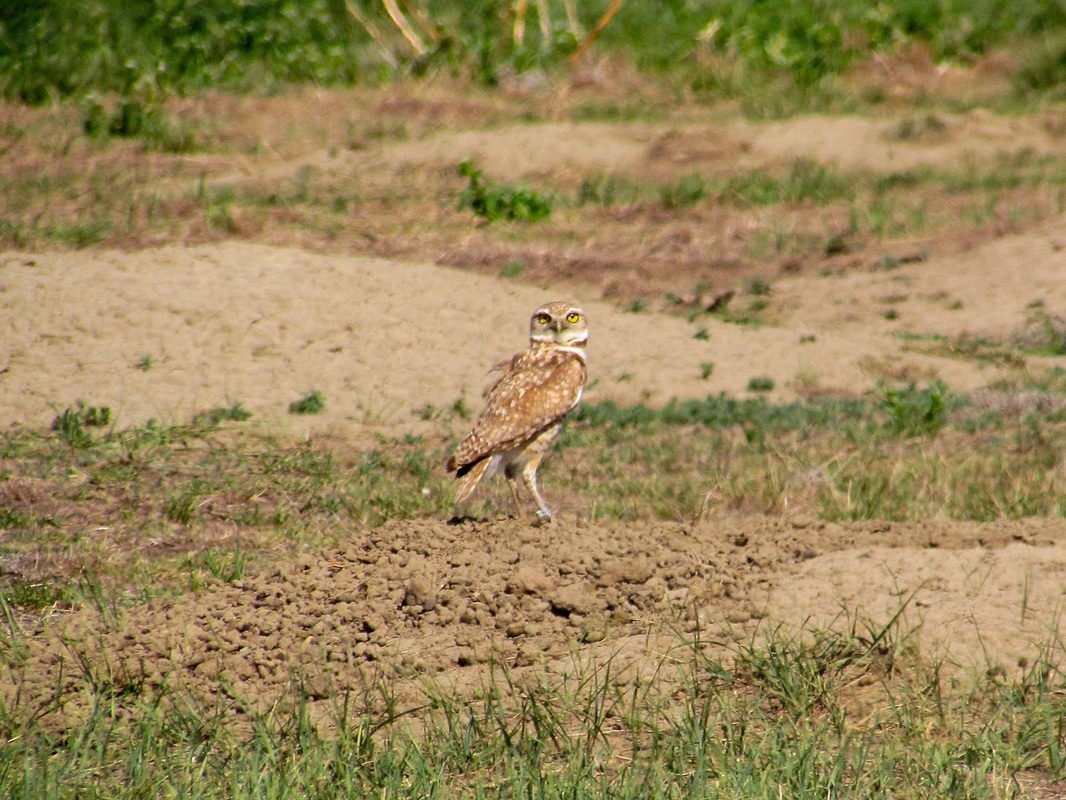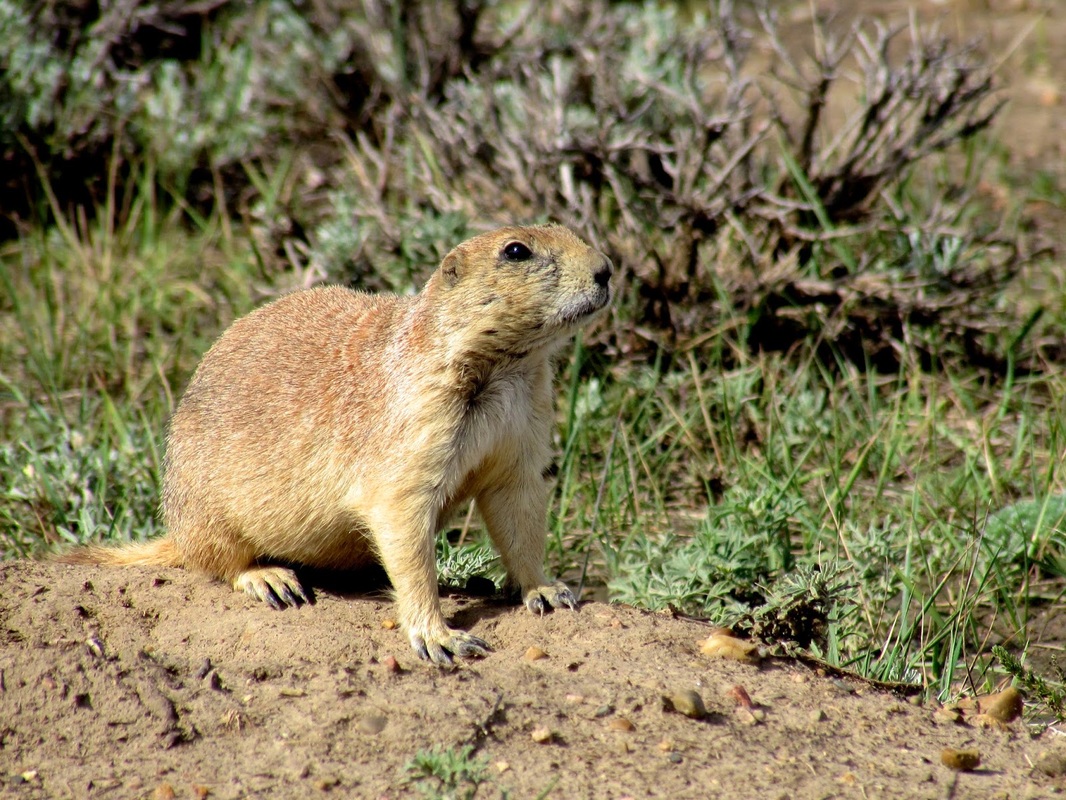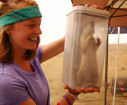Landmark is ASC’s groundbreaking project to provide “boots on the ground” support for the American Prairie Reserve management team. Wildlife survey crews consist of skilled outdoors men and women who live and work on Montana’s northern Great Plains, collecting data that informs APR’s conservation management decisions.
By Meghan Riehl
We often stumble upon prairie dog towns while hiking transects, and are greeted with surround-sound chirps as the animals call out to warn each other of the tall bi-pedal creatures.
Black-tailed prairie dogs inhabit grasslands and sagebrush in extensive underground burrow systems. A keystone species, their colonies create a habitat that benefits more than 150 others. They’re a food source for many animals, including coyotes, eagles, badgers and the endangered black-footed ferret, according to National Geographic.
At the end of July, our Landmark crew spent some of our free time helping a team of prairie dog biologists and field technicians.
We often stumble upon prairie dog towns while hiking transects, and are greeted with surround-sound chirps as the animals call out to warn each other of the tall bi-pedal creatures.
Black-tailed prairie dogs inhabit grasslands and sagebrush in extensive underground burrow systems. A keystone species, their colonies create a habitat that benefits more than 150 others. They’re a food source for many animals, including coyotes, eagles, badgers and the endangered black-footed ferret, according to National Geographic.
At the end of July, our Landmark crew spent some of our free time helping a team of prairie dog biologists and field technicians.
The work was directed by Randy Matchett, a biologist with the U.S. Fish and Wildlife Service, and took place on the Charles M. Russell Wildlife Refuge. Adjacent to American Prairie Reserve, the CMR – together with the UL Bend National Wildlife Refuge – encompasses 1.1 million acres spanning about 125 air miles along the Missouri River, from the Fort Peck Dam west to the boundary with the Upper Missouri River Breaks National Monument.
The biologists are working to bolster the prairie dogs against the Bubonic Plague, which is carried by fleas and can devastate a colony, affecting the entire ecosystem. To do so, the scientists trap the prairie dogs, tranquilize them, comb them for fleas, pluck whiskers and hairs, weigh them, take blood samples, put in tracking chips, and mark them with ear tags. They capture them using bait with a plague vaccine, then use the whiskers to determine if the animals have eaten the bait. Blood samples determine if the vaccine is working.
Because they’re herbivores, prairie dogs’ burrows would rival a fancy golf courses with their landscaping – except for the cone-shaped entrance mound protruding a foot or more above the surface. I like imagining the animals lounging down in the burrows on dirt couches to stay cool, with dirt-furnished living rooms, kitchens and bedrooms.
In reality, their tunnels extend vertically down from the entrance 3-10 feet, and continue horizontally for another 10-16 feet with some connecting tunnels here and there.
In reality, their tunnels extend vertically down from the entrance 3-10 feet, and continue horizontally for another 10-16 feet with some connecting tunnels here and there.
The biologists will be conducting more studies at a prairie dog town near Buffalo Camp in August. Long live the prairie dogs!
Meghan Riehl grew up in Atkinson, New Hampshire, and has a degree in Geology from Union College. She has studied in Australia and New Zealand, and conducted field studies in the Bahamas and Alaska. Read more about her time on the American Prairie Reserve at her blog, Adventures on the Prairie.
Learn more this and other ASC projects on our website, the Field Notes blog, and by following us on Facebook, Twitter, Instagram and Google+.


